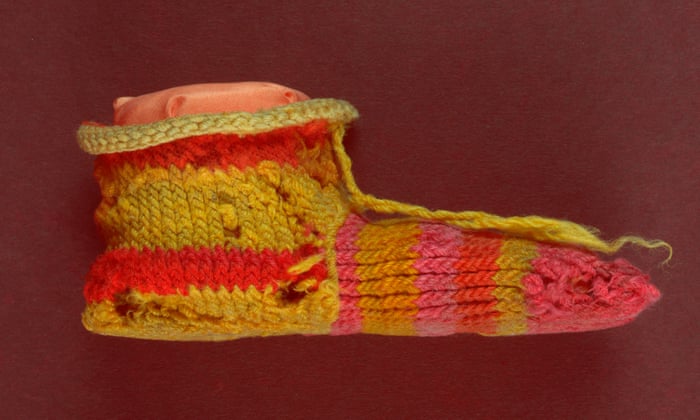Imaging tool unravels secrets of child's sock from ancient Egypt
Non-invasive technique devised by British Museum sheds light on dyeing and weaving process
The ancient Egyptians famously gave us paper and the pyramids, but were also early adopters of the stripy sock.
Scientists at the British Museum have developed pioneering imaging to discover how enterprising Egyptians used dyes on a child's sock, recovered from a rubbish dump in ancient Antinoupolis in Roman Egypt, and dating from 300AD.
New multispectral imaging can establish which dyes were used – madder (red), woad (blue) and weld (yellow) – but also how people of the late antiquity period used double and sequential dying and weaving, and twisting fibres to create myriad colours from their scarce resources.
Crucially, the imaging is non-invasive. Previously studying ancient textiles using radiocarbon dating and dye analysis required physical samples to be taken.
Dr Joanne Dyer, a scientist in the museum's department of scientific research who developed the approach, said: "It was exciting to find that the different coloured stripes found on the child's sock were created using a combination of just three natural dyes."
The imaging process is a far cheaper, less time-consuming and less destructive way of studying ancient textiles, she said. "Previously, you would have to take a small piece of the material, from different areas. And this sock is from 300AD. It's tiny, it's fragile, and you would have to physically destroy part of this object. Whereas with both the [multispectral] imaging, and other techniques, you have a very good preliminary indication of what these could be."
Since you're here…
… we have a small favour to ask. More people are reading the Guardian than ever but advertising revenues across the media are falling fast. And unlike many news organisations, we haven't put up a paywall – we want to keep our journalism as open as we can. So you can see why we need to ask for your help.
The Guardian is editorially independent, meaning we set our own agenda. Our journalism is free from commercial bias and not influenced by billionaire owners, politicians or shareholders. No one edits our Editor. No one steers our opinion. This is important because it enables us to give a voice to the voiceless, challenge the powerful and hold them to account. It's what makes us different to so many others in the media, at a time when factual, honest reporting is critical.
If everyone who reads our reporting, who likes it, helps to support it, our future would be much more secure. For as little as $1, you can support the Guardian – and it only takes a minute. Thank you.
-- Sent from my Linux system.

No comments:
Post a Comment